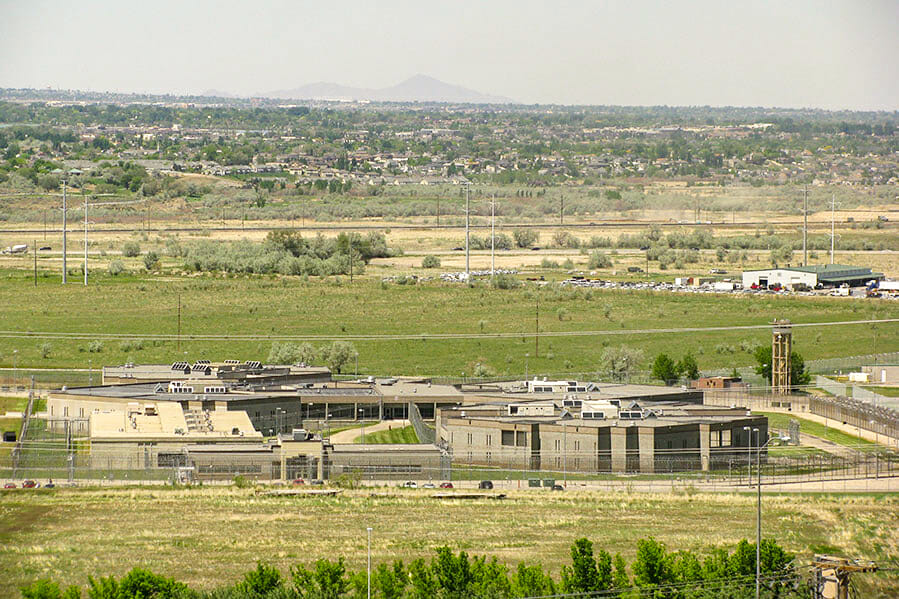
Criminal Justice and Rehabilitation in Utah
While state criminal justice systems share similarities, no two systems are the same from one state to the next. This article summarizes critical aspects of Utah’s criminal justice sector in just a few brief sections, beginning with studying Utah’s prison population and the state’s per capita incarceration data.
Prison Population in Utah
Perhaps the best way to understand the scope of a state’s criminal justice program is to analyze its prison population. Even more critically, one should analyze what percentage of the state’s population is incarcerated. Further, one should find answers to questions like:
- What criminal rehabilitation programs are used in Utah?
- Are there alternatives to incarceration in Utah?
- How many people are incarcerated in Utah?
- What are the biggest prisons in Utah?
- What is Utah’s recidivism rate?
- What is Utah’s crime rate?
According to the Bureau of Justice Statistics, Utah has the 41st highest incarceration rate in the nation, just ahead of Connecticut and just behind Washington. Utah incarcerates about 175 people for every 100,000 living in the state. Overall, the U.S. has about 350 people in jail or prison for every 100,000.1
But how many people are incarcerated in Utah? And where are they located? The National Institute of Corrections reports that Utah holds about 7,600 people in detention in 27 jails across 29 counties. Utah also manages two state prisons responsible for incarcerating about 6,665 prisoners. Utah’s community corrections population was 11,853 under probation and 4,073 under parole in 2019. The state operates its facilities with a staff of 6,619 and a budget of $981,148,500.2 According to the Urban Institute, Utah’s Department of Corrections budget is the seventh costliest budget item in the state.3

The Uintas include the Maximum Security facilities at the Utah State Prison which have capacity for nearly 800 inmates. Image courtesy of corrections.utah.gov
Does Utah use private prisons? In 2000, the state contracted with private prisons to incarcerate 208 prisoners. But by 2020, Utah had phased out its use of private prisons. Currently, most prisoners in Utah are housed in the Utah State Prison, a conglomeration of six prison facilities with a capacity to house up to 1,800 inmates.4
Crime Rate in Utah
One of the best ways to understand the scope of crime and criminal justice in a state is to study the year-to-year crime rate for that state. In Utah:5
- There were 182,452 crimes recorded in 2022, compared to 193,991 in 2021.
- In 2022, there were 32,561 crimes against persons, 104,399 against property, and 45,492 against society.
- Utah recorded 9,752 violent crimes in 2022, compared to 10,269 in 2021.
- In 2022, there were 4,012 aggravated assaults, 2,805 fondlings, 59 murders, 1,519 rapes, 981 robberies, and 275 sodomies.
- Of 32,461 crimes against people, simple assaults were the most common crime, with 16,874 such crimes recorded.
- Of 45,492 crimes against society, drug crimes were the most common, with 21,227 recorded.
- Of 104,399 crimes against property, property damage was the most common, with 22,684 such crimes reported.
The above is just a brief look into crime rates in Utah. However, crime rates have declined slightly, with most major crimes reported as downtrending from 2021.
Recidivism Rate in Utah

What is the recidivism rate in Utah? Recidivism is defined as the rate at which people released from incarceration re-offend and return to incarceration. According to an independent source, Utah has a recidivism rate of 46%, meaning the criminal justice system in the state is not working for almost half of those who go through it.6 Further, government-led research confirms the independent data; recidivism in Utah is at least 46%.7
The Need for Real Criminal Reform and Alternatives to Incarceration in Utah
Seven of Utah’s ten most common offenses leading to incarceration are nonviolent drug possession offenses. To combat high recidivism and provide real reform to offenders, Gov. Gary Herbert signed a 2015 law intended to improve rehabilitation programs inside prisons in Utah. That bill was also designed to provide better resources for formerly incarcerated individuals.
Another bill, signed in 2017, sought to make numerous changes to Utah’s juvenile criminal codes, all intended to keep young people out of jail whenever possible, particularly for drug offenses. Instead, drug rehabilitation programs are prioritized to ensure the long-term success of young offenders.

Image courtesy of corrections.utah.gov
Other areas where Utah could improve would be to implement programs like the following in its prisons:
- Substance abuse treatment programs for offenders who use drugs and alcohol
- Work training to help offenders learn employable skills for post-incarceration life
- Life skills programs to help offenders live crime-free lives following their release
Further, the state should implement educational programs inside prisons in Utah. It is becoming increasingly clear that crime can be traced back to critical life hardships and very difficult situations one could not cope with, that one did not have healthy, informed tools for working their way out of. Conversely, when an offender is empowered with the education, real-life tools, and life skills they need to get to the bottom of what led them to crime in the first place, they’re less likely to commit more crimes once released from prison.
Finally, Utah should also implement alternatives to incarceration for most nonviolent crimes for adults. Such programs can include:
- Probation
- House arrest
- Community service
- Work release programs
- Substance abuse programs
With more evidence-based programs offered in Utah prisons and with more incarceration alternatives, Utah can reduce its crime and recidivism rates while improving public safety for all Utah residents and visitors.
Sources:
- BJS. “Prisoners in 2020 – Statistical Tables.” Bureau of Justice Statistics, 2020. bjs.ojp.gov
- NIC. “Utah 2019.” National Institute of Corrections, 2019. nicic.gov
- Urban. “Project Utah.” Urban Institute, 2023. urban.org
- UDC. “Utah State Prison.” Utah Department of Corrections, 2023. corrections.utah.gov
- UCR. “Utah Crime Against Persons, Society, and Property.” Utah Crime Reporting, 2023. corrections.utah.gov
- NCJ. “Criminal Justice Reform in Utah.” Nolan Center for Justice, 2023. conservativejusticereform.org
- BJA. “Utah.” Bureau of Justice Assistance, 2014. bjafactsheets.iir.com
Related Articles
Students Succeeding in US Correctional Facilities
"What a wonderful way of life. Drugs can and will destroy any chance of success or happiness to anybody's life. I always thought them to...
Read more >>
Soledad State Prison The Way to Happiness
On The Way to Happiness Course... It was December 2002, just before Christmas, when I was first introduced by a friend about The Way to...
Read more >>



